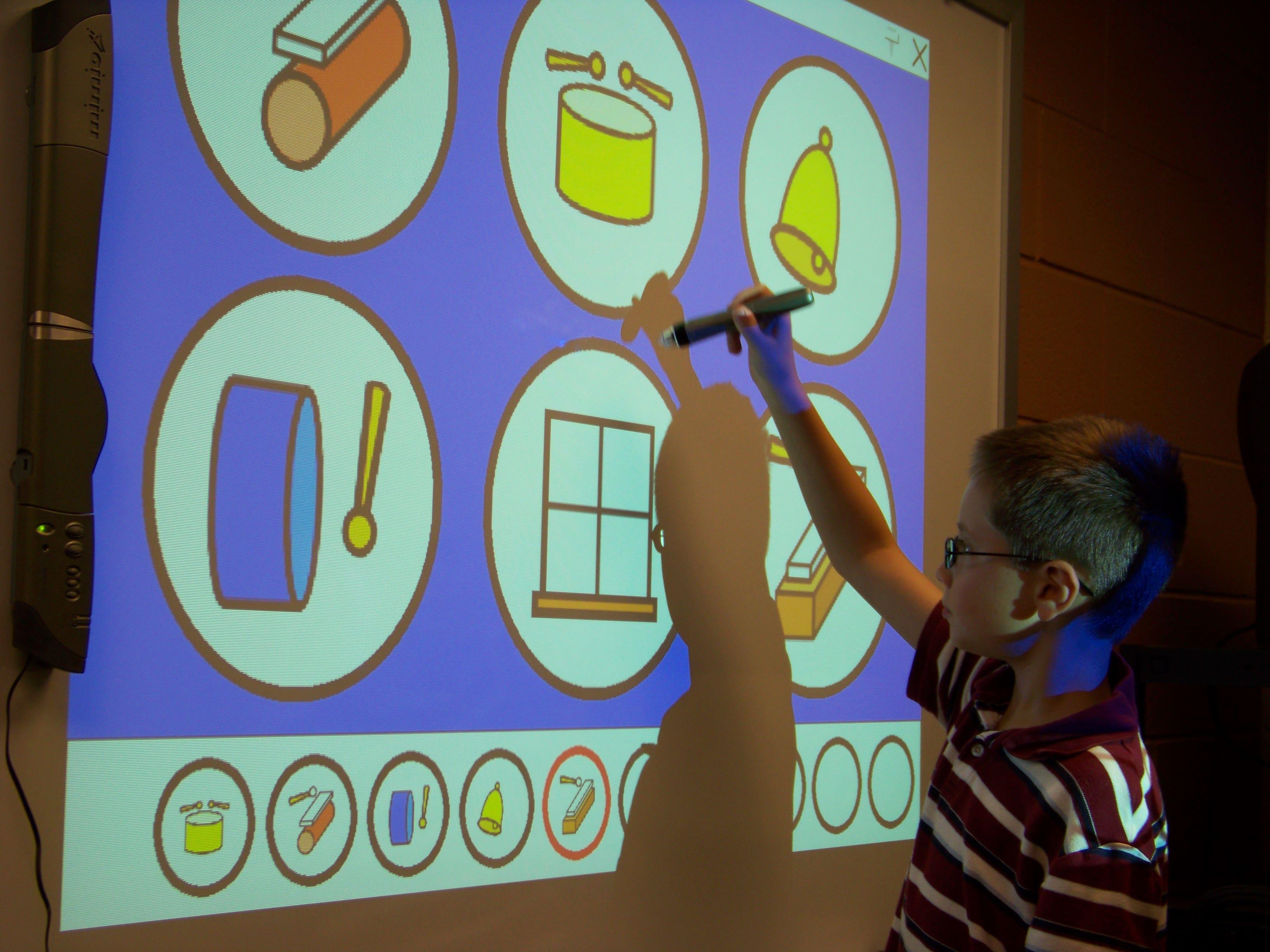 I recently received a question in my mailbox from a reader of my weekly music education newsletter and thought it would be a good one to share with everyone. The question asked which interactive whiteboard I would buy (SmartBoard, ActivBoard, StarBoard, Mimio, etc.) if I had the money to do so. He went on to say it was for a 7th grade music classroom. Read on for my personal take on the whole thing.
I recently received a question in my mailbox from a reader of my weekly music education newsletter and thought it would be a good one to share with everyone. The question asked which interactive whiteboard I would buy (SmartBoard, ActivBoard, StarBoard, Mimio, etc.) if I had the money to do so. He went on to say it was for a 7th grade music classroom. Read on for my personal take on the whole thing.
Which Interactive Whiteboard Is Best?
The short answer is, it all depends on what you are teaching with the interactive whiteboard. I have tried and used several different interactive whiteboard (IWB) systems in my classroom and in demo booths all over the country. For music educators it does not really come down to hardware or features, instead it boils down to the software and how easy it is to make new materials to use on it. The problem with our field is that there is nowhere near the amount of user created music education IWB content out there as there are interactive whiteboard lesson plans for math or science classes. Because of this the choice of which interactive whiteboard to buy needs to be based on which software package offers the most ready made resources for us to use.
Of all of the interactive whiteboard manufacturers that I have been exposed to it appears to me that the best music education content is available on the Promethean ActivBoard and the SmartBoard. Both of these brands have a very large installed user base and encourage sharing of materials between teachers. The Promethean Planet web site in particular has dozens of premade ActivBoard lessons ready for use in the music classroom, but more importantly they have a number of good pieces of staff paper and music note graphics ready to drag and drop into anything you want to create for class. SmartBoard has their own decent collection of materials as well, but with either brand be ready to do a lot of customizing of anything you decide to download and use.
The other brands such as StarBoard and Mimio have their own positives and negatives, but neither have much in terms of music related resources. The default installation of the Mimio for example includes only three pieces of staff paper but almost nothing else for music classes.
So in short, if I was purchasing a new interactive white board for use in a music oriented classroom I would probably lean toward either the ActivBoard or the SmartBoard simply because of their software. Hardware on the other hand is whole other can of worms.
A Brief Discussion of IWB Hardware
My personal experiences with certain brands of interactive whiteboards have not been too favorable, and because of this I am just going to leave them out of the discussion entirely rather than saying why I would or would not buy a specific brand or model. Lets just say that if you can afford to purchase a permanent, board style IWB over a portable device go for the permanent model every time. Other things that can be of importance to consider include the age group you are teaching and the lighting system in the room itself. Some boards use infrared or ultrasonic triangulation to figure out where you are writing on the board. The infrared motion sensors in many newer classrooms do not play well with this type of IWB system. Mimio and a few other smaller names in the IWB market sell this type of board. Be sure to check with your building staff to find out if this will be a problem or not before making a purchase.
When buying a whiteboard you should also consider what type of touch you want to have. Some boards require special stylus pens (ActivBoard) but are very accurate when drawing or manipulating fine detail on the screen. Other boards use touch sensitive matrix wires embedded in the board (Smartboard) and if desired can operate without a stylus simply by touching the surface with a finger or any blunt object. A third type of board uses optical cameras (StarBoard) to sense the position of a finger or stylus on the surface of the screen. The StarBoard also has the added benefit of being a multitouch board meaning that more than one student can draw on the board at one time or that a person can finger pinch to zoom in and out when using applications like Google Earth. Â My personal experience has been that with very little kids these optical boards are a nice thing to have in the classroom. As the students grow older the boards with a stylus tend to become more useful as students grow more used to using pens and pencils in their daily lives.
Although there are obviously many things to consider when purchasing an interactive whiteboard for a classroom, in my opinion it still comes down to the most important piece of the puzzle being the presentation software that runs it. Ask your retailer a lot of questions and ask to see the music related content that is available for the board before making a final decision.
